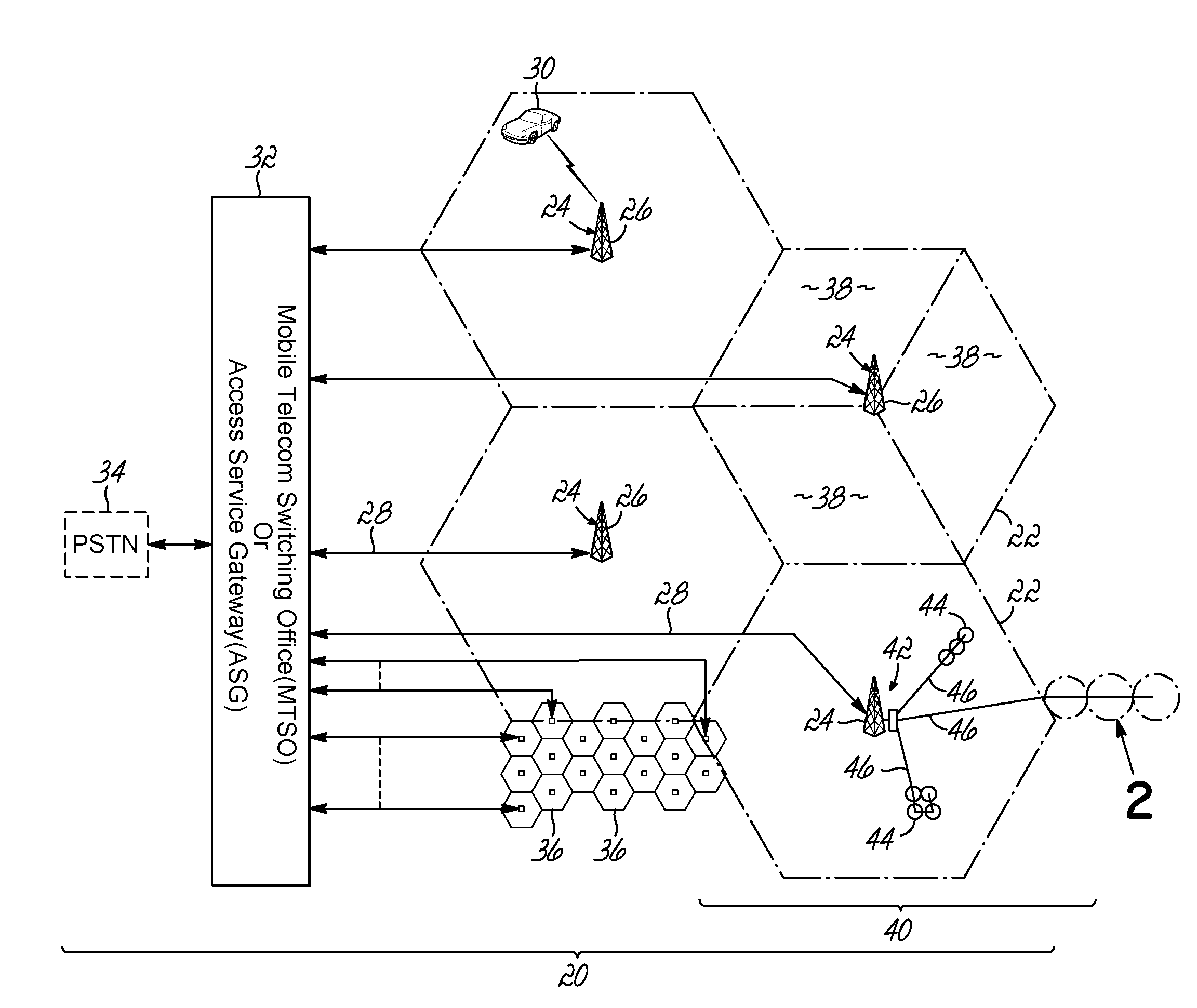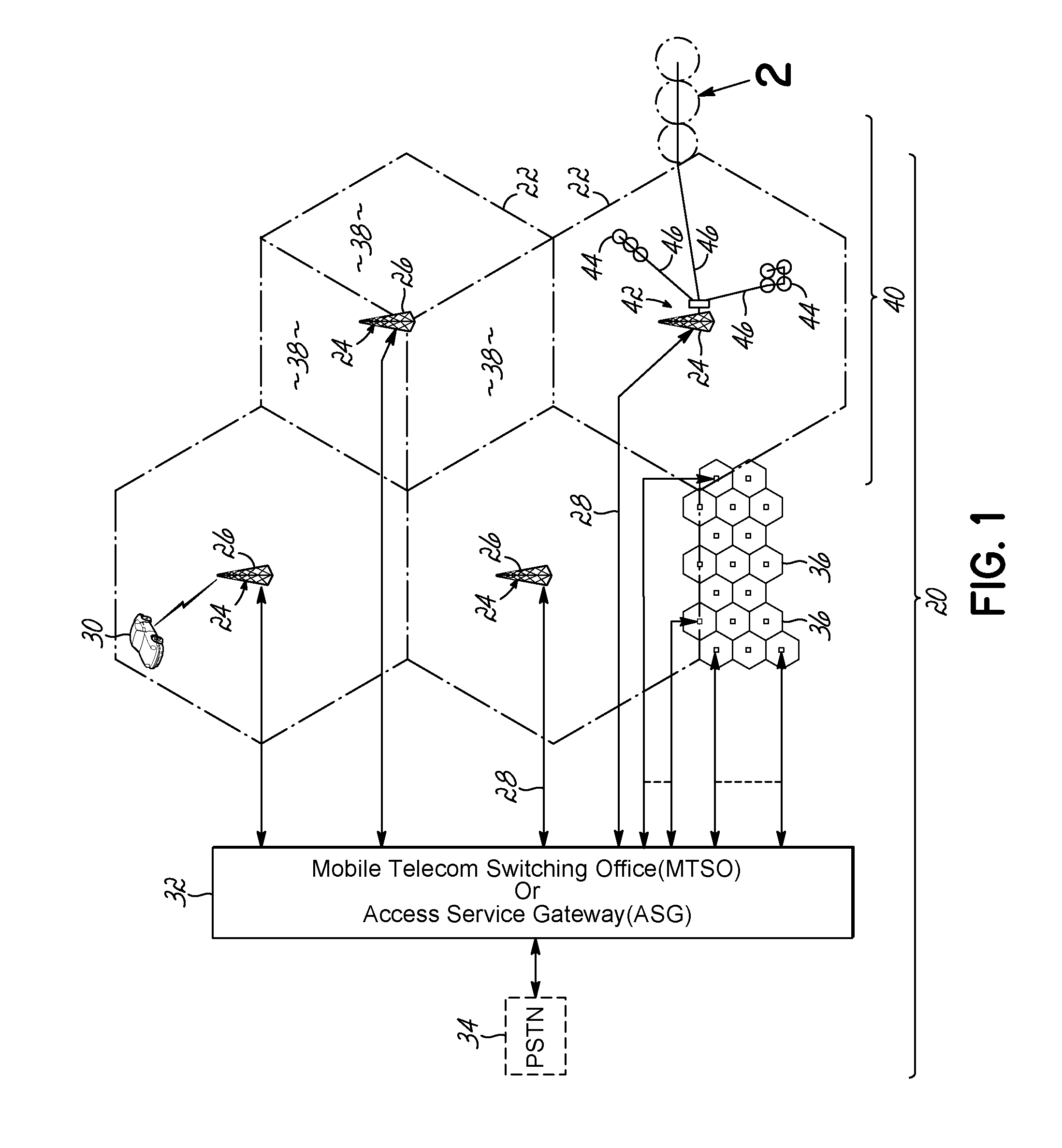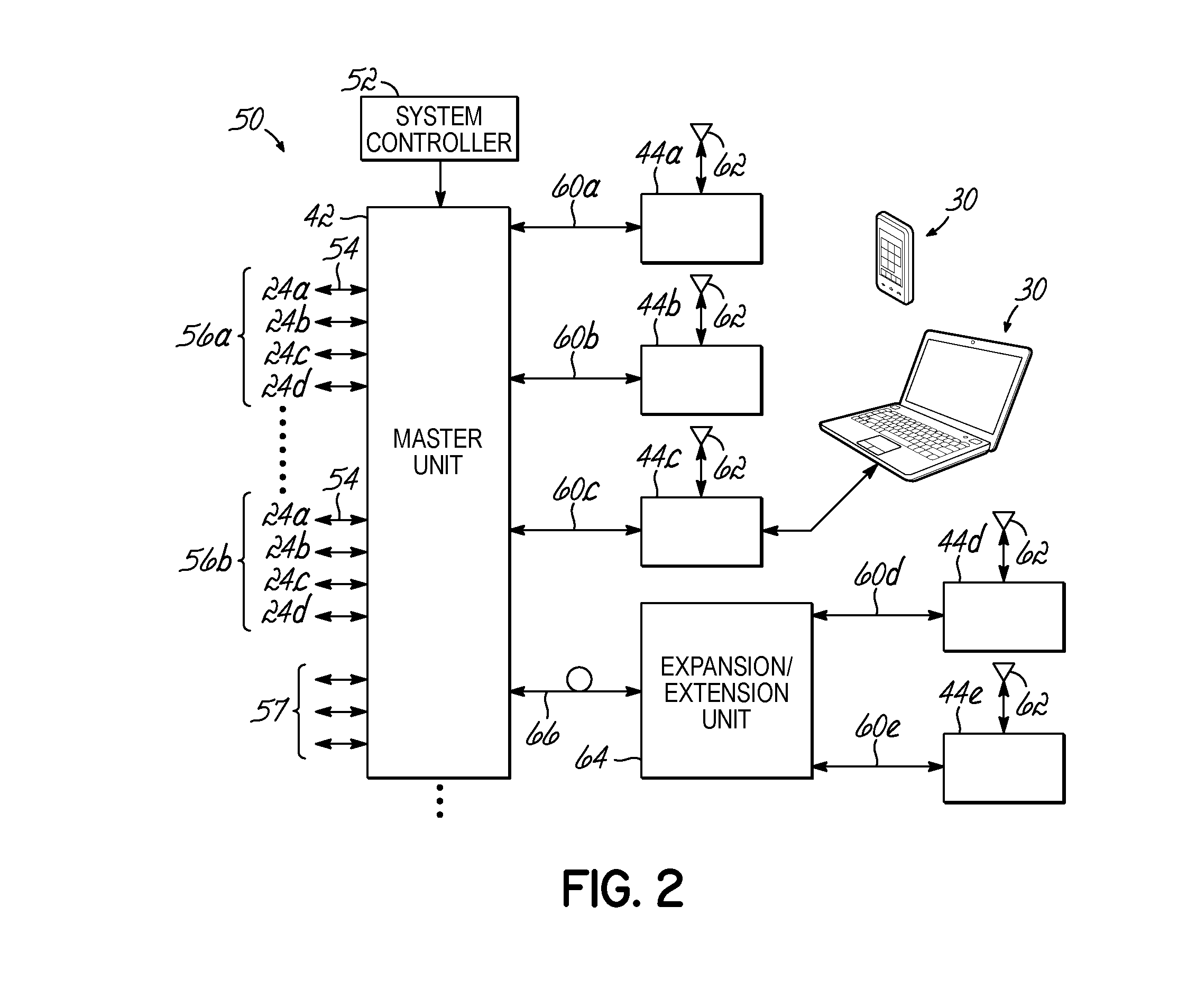Synchronous transfer of streaming data in a distributed antenna system
a distributed antenna system and streaming data technology, applied in the field of wireless communication systems, can solve the problems of increasing the cost of the distributed antenna system, restricting the speed/phase control of synchronisation signals, and inability to receive such signals,
- Summary
- Abstract
- Description
- Claims
- Application Information
AI Technical Summary
Benefits of technology
Problems solved by technology
Method used
Image
Examples
Embodiment Construction
[0023]Embodiments of the present invention provide a remote unit that can be used to recover a clock signal embedded in a modulated signal. To do this, embodiments of the invention are capable of extracting the clock signal from the modulated signal, reducing the jitter on that extracted signal, then scaling the frequency of that signal. Advantageously, this allows a master unit to communicate with remote units over an unshielded twisted pair cable such that the cost for deployment is lessened. Embodiments of the invention further account for distributed antenna systems that use a mixed combination of fiber optic and twisted pair cables and also can be used to recover a clock signal embedded as a component of the modulated signal.
[0024]Cellular phone systems and broadband wireless metropolitan networks 20, as shown in FIGS. 1 and 2, are generally divided into a number of cells 22 distributed in a pattern to preclude co-channel interferences and provide coverage of mobile and fixed s...
PUM
 Login to View More
Login to View More Abstract
Description
Claims
Application Information
 Login to View More
Login to View More - R&D
- Intellectual Property
- Life Sciences
- Materials
- Tech Scout
- Unparalleled Data Quality
- Higher Quality Content
- 60% Fewer Hallucinations
Browse by: Latest US Patents, China's latest patents, Technical Efficacy Thesaurus, Application Domain, Technology Topic, Popular Technical Reports.
© 2025 PatSnap. All rights reserved.Legal|Privacy policy|Modern Slavery Act Transparency Statement|Sitemap|About US| Contact US: help@patsnap.com



